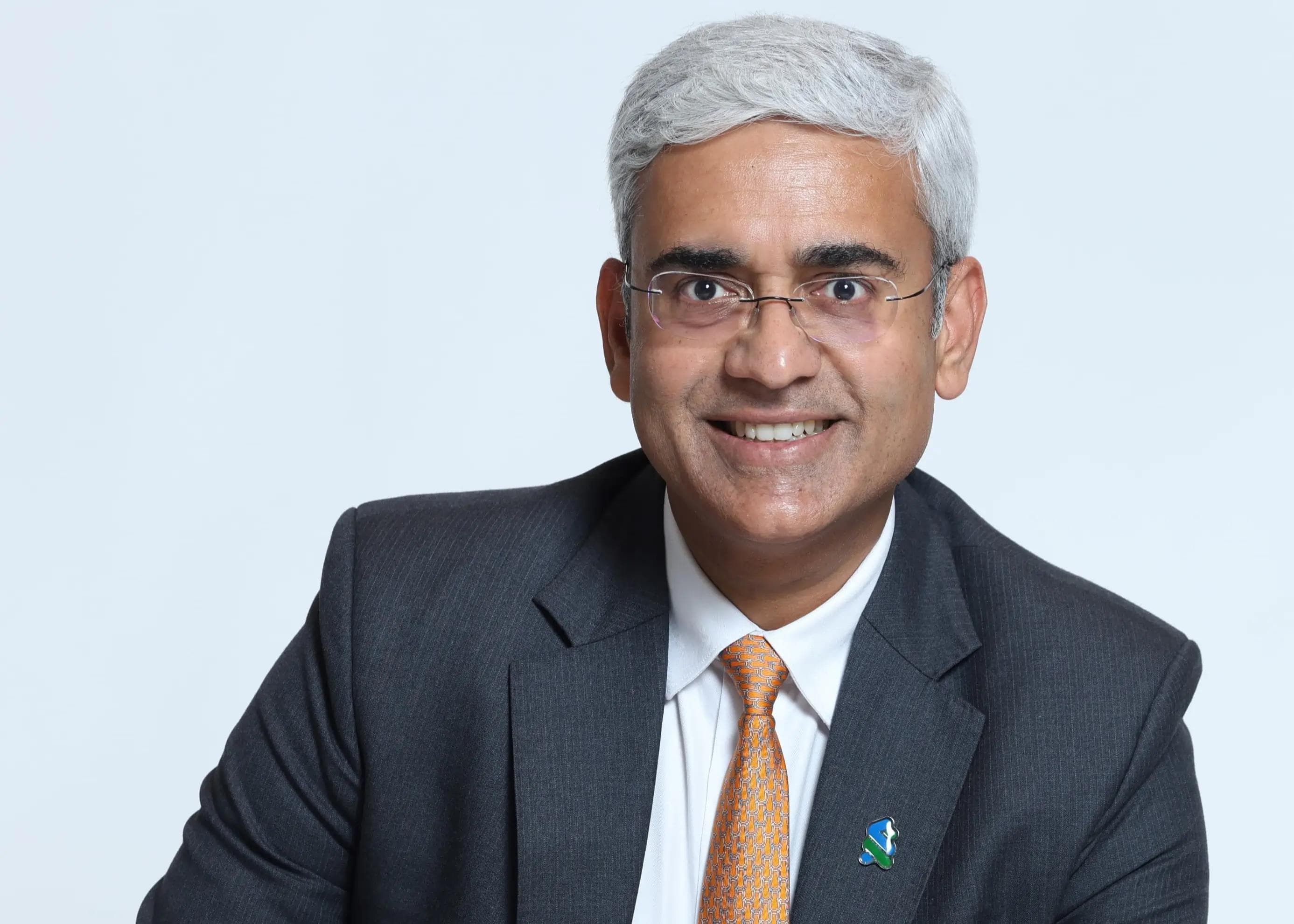The Role of Digital Transformations in Delivering Better Banking Outcomes: Q&A with Leena Kallakuri
The Role of Digital Transformations in Delivering Better Banking Outcomes: Q&A with Leena Kallakuri
Published by Wanda Rich
Posted on May 6, 2025

Published by Wanda Rich
Posted on May 6, 2025

By Adam Darby
Thriving in the modern digital era requires a heightened inclusion of digital transformations and developments for global businesses and organizations. The same principle applies to the world of banking and financial services. Whether advancing cybersecurity measures to ensure enhanced privacy and risk management or improving the overall customer experience through digital banking and personal financial handling, an organization’s digital transformation journey determines its place in the current business world. Creating stronger customer relationships to ensure higher customer satisfaction levels and strengthen loyalty means going above and beyond to implement the latest digital innovations and technologies.
Younger generations are increasingly reliant on and accustomed to the evolving digital features and capabilities involved with personal banking and finance. In 2023, a study showed that 84 percent of millennials prefer to bank digitally, with nearly half stating they would switch banks if their digital platforms were not robust enough. With these numbers only climbing higher, it is essential to anticipate the centralized role that digital banking will play in the future of personal finance and customer relationships. Capital One’s Vice President of Software Engineering, Leena Kallakuri, has led enterprise-scale transformations and initiated platforms that demanded rapid development and exceptional reliability. She oversees software engineering teams that leverage application programming interfaces (APIs), microservices, cloud, artificial intelligence (AI), machine learning (ML), and related modern technologies to build next-generation banking solutions aligned with digital and mobile-first growth strategies. Kallakuri offers her insights on where banking and financial services are headed.
Q: There are significant shifts in customer expectations due to developments in banking technology. How can the banking and financial services sector use technology to improve the customer experience through mobile banking?
Kallakuri: There are multiple ways to address evolving customer expectations. It all starts with providing a seamless user experience where a clean, straightforward, easy-to-navigate mobile app provides the access and features that customers need. This is accomplished through intuitive design and leveraging AI for enhanced personalization to create an experience catered to the user. It’s vital to understand what customers need and what their patterns or behaviors are. From there, tech teams can personalize and customize the features. Tech can be used in numerous ways to deliver a connected and interactive experience for customers and their unique needs. It could be through a mobile app or website or by contacting customers directly through a chat point. Technology plays a significant role in successfully creating an online channel experience. Users want 24/7 communication to ask questions or access sensitive financial data, whether with an actual person or a chatbot that works to ease the customer into an open dialogue that feels like the customer is sitting in front of the banking specialist in the office.
Q: How do AI and ML enhance personalization and fraud detection in mobile banking?
Kallakuri: AI and ML enable hyper-personalization, especially in fraud detection and predictive analysis. For example, some customers tend to transact or use their credit cards in a particular zip code or neighborhood most of the time. If they suddenly make purchases somewhere that isn’t their typical location, place, or store, AI can examine this data, compare it, and predict whether it is potential fraud. Then, depending on customers’ preferences, AI alerts customers about the possible risk via a text message, notification, or email. This alert is designed to confirm whether the customers are initiating these transactions. If customers verify the charge was faudulent, the financial entity will have access to examine the occurrence further and determine the possibility of fraudulent activity. Customers need to be alerted in real time to eliminate the possibility of further financial impact from fraudulent activity. Meanwhile, it’s up to financial institutions to implement the latest technologies and software to ensure this is quickly handled.
Q: What is cybersecurity’s role in ensuring trust and security in digital banking interactions?
Kallakuri: Cybersecurity is crucial from several perspectives. For customers, it’s how companies earn their trust. It is critical for banks to use technology that ensures end-to-end encryption of sensitive customer data and adheres to the preferred privacy settings and standards set forth by customers. Understanding how to comply with customers’ needs and automate the risks and controls from a technological perspective is vital. Another fundamental feature is to use AI to block any malicious activity as soon as it is detected in real time to prevent fraud and cyberattacks. Encryption and tailored security, including with mobile apps, are key.
Q: What do omnichannel experiences look like compared to multichannel experiences?
Kallakuri: Omnichannel and multichannel can be differentiated in terms of how the customers interact with each channel. Multichannel banking is centered around how a customer can reach out to an agent or accomplish tasks digitally. Omnichannel is about starting on one channel but then picking up on a different channel. For example, let’s say a customer starts a transaction on the institution’s website, such as making a payment for their credit card, but they are also also trying to add new banking information. The profile runs into an issue, and then the website prompts the customer to talk to an agent, which means they cannot self-serve anymore. The good news is that the agent knows where to pick up based on what the customer was doing and quickly has that context to decrease the time spent trying to understand their problem and immediately help. This is how omnichannel is evolving.
Q: How does digital banking improve financial inclusion and accessibility for underserved communities?
Kallakuri: First, financial inclusion comes from ensuring financial education. Banks are critical in financial literacy and educating customers in areas like revolving balances, interest, what happens when payments are made on time, and how to build or rebuild credit. Underserved communities are another aspect of financial inclusion. Financial institutions understand that the credit risk is high in underserved communities. The challenge is to design a credit product that includes financial literacy and helps this population realize what it means to be responsible with credit to ensure a future where they can care for the elderly within their community. It’s essential for financial organizations to better inform their customers of digital banking possibilities and what that means for their sensitive data. By educating the customer on the institution’s data protection measures and the features and capabilities available to them through mobile and online banking solutions, customers can experience that accessibility while also feeling more included in the process.
Q: What are the best practices for integrating mobile, online, and in-branch banking to create unified customer experiences? How can financial organizations overcome challenges when implementing digital transformations?
Kallakuri: A cohesive user experience starts with abundant amounts of customer data that banks possess. How can financial organizations use this data to help understand their customers and their preferences for interaction? It’s vital to have a good grip on the customer’s data and ensure it is being used intelligently and responsibly. It is essential for financial services organizations to provide a seamless or connected experience—the transition between channels. Again, data plays a huge role here. How do you unify customer profiles across various channels? How do you then leverage the data across these channels in real time? It is imperative to make connections and have consistent branding and user interfaces across the channels.
The most significant challenge to overcome is legacy systems and how banks modernize their infrastructure from the inside out. Moving their infrastructure to the cloud (private, public, or hybrid) gives them the ability to scale and have faster innovation cycles and better resiliency in the event of a disaster. Another consequential concern is security and data privacy. We cannot avoid introducing new cybersecurity tests into the banking environment. Investing in a complete understanding of the banking regulations and compliance requirements addresses this concern.
As tedious as the challenges may seem, there are best practices and methods that financial professionals can implement when overcoming these issues. It’s crucial to focus on moving from monolithic to microservice architecture by building small and independent services that can be enhanced faster without breaking the entire ecosystem. Banks can gradually migrate their capabilities to newer platforms through wrapper APIs instead of a big-bang approach. This allows them to reduce risk and make it easier to manage while enabling quick learning.
It’s essential to understand cybersecurity and fraud trends and patterns and implement automated methods to detect, prevent, and mitigate these threats and attacks using real-time methods. The best way to handle threats like these is to address them directly as they occur. Real-time cybersecurity shields and protection ensure that the customer doesn’t feel threatened or that their data is in danger. These precautions eliminate the threat before it even becomes a problem.
The digital transformation journey
There are significant shifts in how financial organizations view AI/data-driven technologies and their roles in the financial world. Whether it’s the implementation of open banking to create a more intimate connection with the customer or applying AI automation to save time on repetitive tasks, enhance cash flow, and mitigate risks, modern trends in the marketplace only plant the seed for further developments and innovations. Kallakuri is deeply involved in ensuring that the latest financial tech developments are implemented and standardized to create stronger relations with clientele. Customers want simplified and convenient access to their finances. As financial services organizations adopt more advanced digital transformation journeys to dictate how they conduct business moving forward, it is crucial for leadership to understand their potential while anticipating a rapidly changing marketplace.

About the Author:
Adam Darby is a freelance writer for various magazines and news publications. He also serves as a content writer for professional websites, blogs, podcasts, and social media accounts. For additional information, contact [email protected].
Explore more articles in the Interviews category











